Montagne Cangshan, Dali - Billets, heures d'ouverture, emplacement et points forts

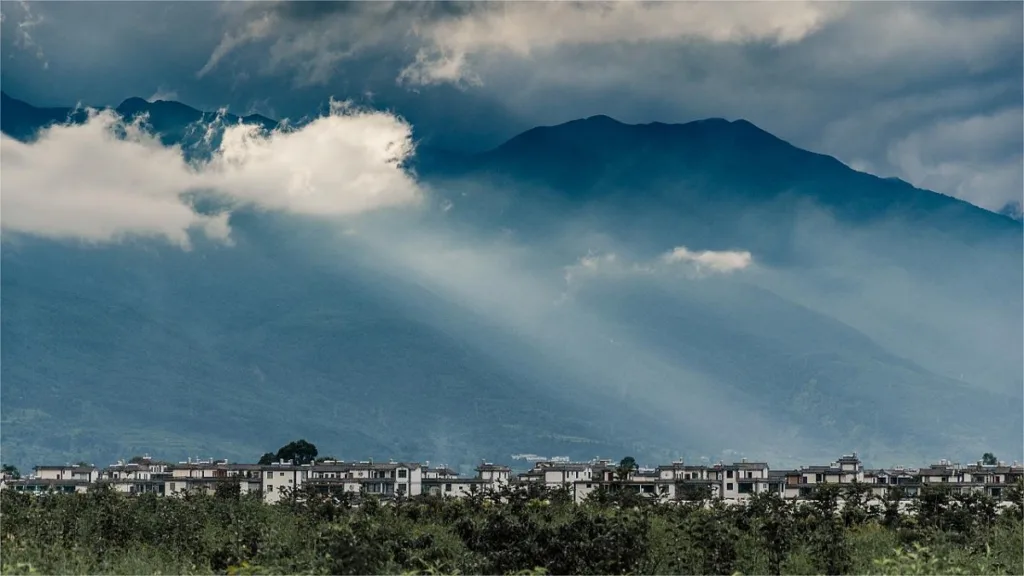
Cangshan Mountain (苍山), also known as Diancangshan (点苍山), is part of the Hengduan Mountains range, which is the southern extension of the Himalayas. Its coordinates range from approximately 100°55′00″E to 100°11′30″E longitude and 25°34′30″N to 26°00′00″N latitude. The mountain range stretches in a northwest to southeast direction, spanning about 48 kilometers from north to south and approximately 18 kilometers from east to west.
Comprising 19 peaks, Cangshan Mountain boasts elevations ranging from 3,074 to 4,122 meters above sea level. Its highest peak, Malong Peak, stands at an impressive 4,122 meters, with a relative height difference of approximately 2,500 meters compared to the valleys on its western slope and about 2,100 meters compared to Erhai Lake on its eastern slope.
A highlight of Cangshan Mountain is the Yudai Yungu Trail (Jade-Cloud Trail), an approximately 18-kilometer-long scenic path that winds along the mountain’s midsection. Beginning at Xiaocen Peak in the north and extending to Shengying Peak in the south, the trail passes through numerous peaks and scenic spots such as Qingbi Stream, Qilongnu Pool, and Zhonghe Temple. Walking along this trail, which is situated at an altitude of over 2,000 meters, offers breathtaking panoramic views of Dali Basin and Erhai Lake, providing visitors with a sense of tranquility and serenity amidst the expansive natural beauty.
Table des matières
Informations de base
| Durée estimée de la visite | 1 jour |
| Prix du billet | 35 RMB |
| Cable Car+Admission | Xima Pool Cable Car (almost to the peak): One-way: 175 RMB Round: 320 RMB Gantong Cable Car (to the halfway of the mountain): Round: 115 RMB |
| Heures d'ouverture | 8.30 – 15.00 |
| Numéro de téléphone | 0086-0872-5365006 |
Localisation et transport
Cangshan Mountain is situated in the border area of Dali City, Yangbi County, and Eryuan County in the Dali Bai Autonomous Prefecture of Yunnan Province, China. Covering a total area of 519.9 square kilometers, it serves as a majestic backdrop to the region’s cultural and natural splendors. The entrance to Cangshan Mountain is located at No. 5 Yu’er Road. To reach Cangshan Mountain:
If you are in Dali Ancient City, you can opt to take a taxi directly to the mountain entrance. Alternatively, you can go to the Tourist Center in the ancient city and take the Dali Tourist Area shuttle bus, which provides convenient transportation.
If you are in Xiaguan, you can take bus route 4 to Cangshan Gate in Dali Ancient City and then choose to take a taxi or the tourist area shuttle bus to reach your destination.
If you arrive at the airport or train station, you can take the tourist area shuttle bus directly to Cangshan Mountain.
Highlights of Cangshan Mountain
Cangshan Eighteen Streams

The Cangshan Eighteen Streams serve as vital arteries, supplying water to the famous Erhai Lake and its surrounding fertile lands. Covering an expansive basin of 336.9 square kilometers, these streams contribute an average annual surface runoff of 2.339 billion cubic meters, significantly shaping the ecological balance of Erhai Lake. The western slope of Cangshan Mountain alone hosts 23 rivers, collectively contributing to a minimum flow rate of 4.923 cubic meters per second, enriching the Heihui River basin. Additionally, the northern region features the Shuichang River, which flows into the Fengyu River before eventually merging into Erhai Lake, further influencing its ecosystem.
Qingbi Stream Gorge
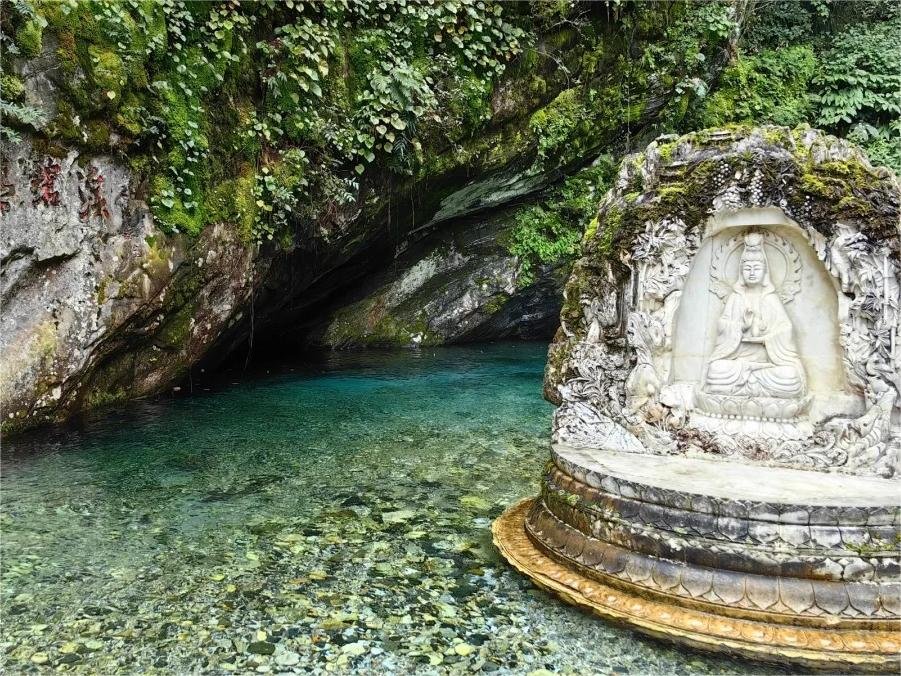
Nestled between the peaks of Malong and Shengying, the Qingbi Stream Gorge offers visitors a glimpse into the geological history of Cangshan Mountain. Formed over 50 million years ago during the Himalayan orogeny, this gorge is a testament to the enduring forces of nature. The uplift of Cangshan Mountain, coupled with the relentless erosion by flowing water, glaciers, and gravitational collapses, sculpted the landscape into its present form. With a vertical drop of approximately 150 meters from the mountain peaks to the valley floor and a narrow width of just 5 meters, the gorge is a stunning display of nature’s raw power. The towering cliffs of the gorge reveal layers of rock dating back 1.9 billion years to the ancient Paleoproterozoic era, showcasing the geological evolution of the region.
Cangshan Shrine
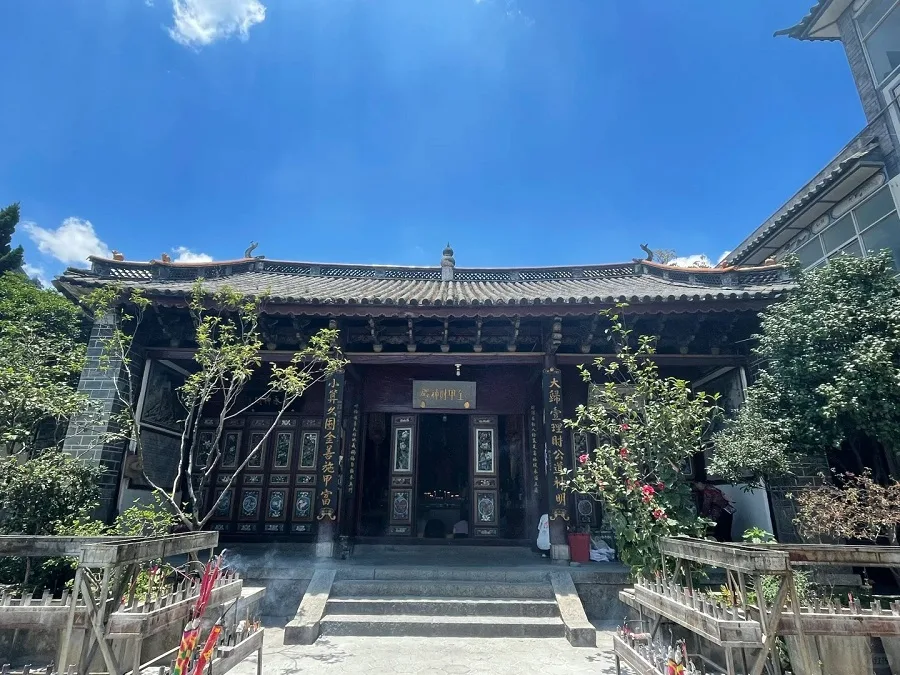
The Cangshan Shrine, also known as the Cangshan Temple, stands proudly at the foothills of Cangshan Mountain, approximately 2 kilometers west of the ancient city of Dali. Dedicated to the deity of Cangshan Mountain, the shrine is believed to have been built during the early period of the Nanzhao Kingdom. It serves as a historical monument reflecting the unity of the ethnic groups and the unity of the China. Though the original stone chamber of the shrine remains, the temple underwent significant renovations during the Qing Dynasty, particularly during the reigns of Emperor Jiaqing and Emperor Daoguang. In December 1987, the Yunnan Provincial People’s Government designated it as a third-level provincial cultural relic protection unit, recognizing its historical and cultural significance.
Temple de Gantong
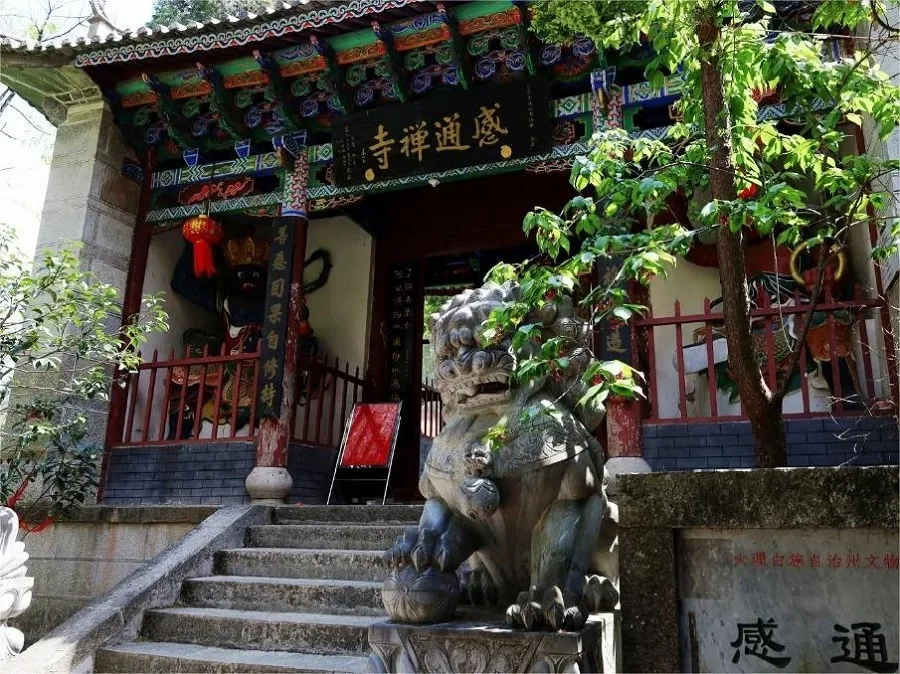
Temple de Gantong, also known as Dangshan Temple, has its roots traced back to the early Tang Dynasty. Founded by the revered monk Li Chengmei, it holds historical significance for its association with the Ming Dynasty Emperor Zhu Yuanzhang. In the 16th year of the Hongwu reign (1383), the abbot of Gantong Temple, Master Wujie, presented white horses and camellia flowers to Emperor Zhu Yuanzhang during his pilgrimage to Nanjing. Delighted by the gesture, the emperor composed and bestowed two poems, along with eighteen verses of water and land travel, to the temple, all of which were inscribed on stone tablets erected in front of the main hall of Gantong Temple. In later years, eminent monks of Yunnan resided in the temple, with their memorial pagodas standing within its grounds. Close to Gantong Temple, Jizhao Nunnery has risen to fame in recent years due to its lush vegetation and flowers.
Zhonghe Temple

Zhonghe Temple, named after its location at the central peak of Cangshan Mountain, holds a special place in the religious landscape of Dali. During the Qing Dynasty, Emperor Kangxi bestowed the honorary plaque “滇云拱极 (Dianyun Gongji)” upon the temple, recognizing its significance as one of the renowned Taoist temples in Dali. Initially established during the Tang Dynasty under the reign of the Nanzhao king Yimouxun, Zhonghe Temple served as the central point for the worship of the “Five Sacred Mountains” of Cangshan Mountain by the kings of the Nanzhao Kingdom.
Temple de Wuwei

Temple de Wuwei, located at the eastern foot of the Lanfeng Peak of Cangshan Mountain, was constructed during the Song Dynasty by Duan Siping, the ruler of the Dali Kingdom, who had a profound admiration for Buddhism. During the Yuan Dynasty, Emperor Kublai Khan, while on his expedition to Dali, stationed his troops near the temple, establishing a military camp known as “Zhuhuatai.” Behind the temple lies a clear spring, known as the “Plague-Relief Spring,” believed to have healing properties against diseases. During the Ming Dynasty, the temple underwent renovations and expansions, featuring grand structures such as the Mountain Gate, the Main Hall, two side halls, the Lao Yan Pavilion, and the Cuihua Tower.
Xima Pool
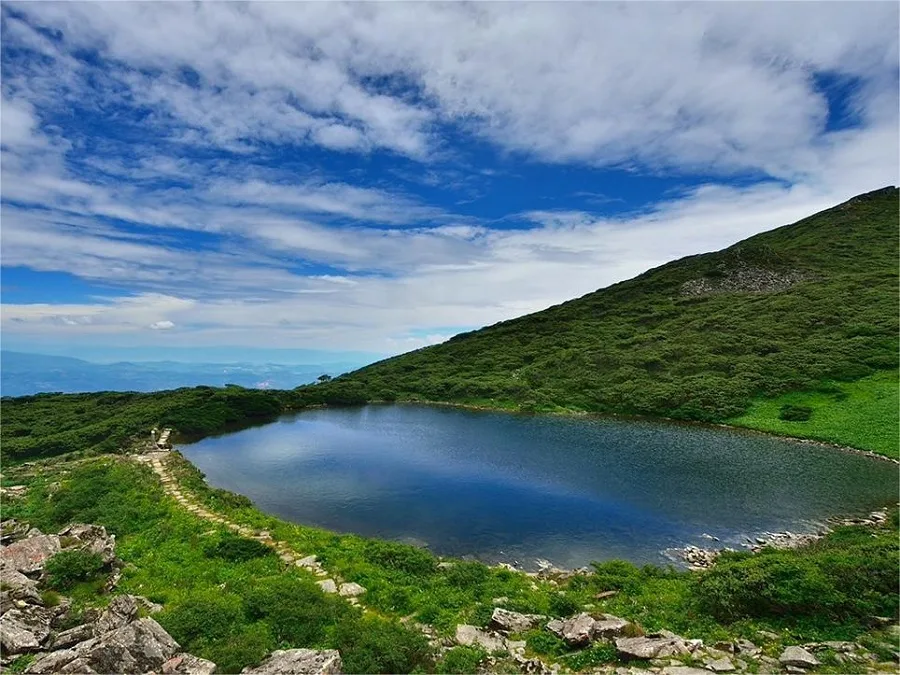
Xima Pool, situated at the junction of the Yujufeng and Longquanfeng peaks of Cangshan Mountain, stands at an elevation of 3920 meters. It is a relic of the Fourth Quaternary Dali Glacier Lake. According to legend, Emperor Kublai Khan stationed his troops here and washed his horses during his expedition to Dali, hence the name “Xima Pool,” which translates to “Horse Washing Pool.” Previously known as Gaohe or “Rushing River,” it was once a part of the water management system of the Nanzhao Kingdom, as mentioned in the “Nanzhao Dehua Stele.” The pool, with a diameter of approximately 170 meters and a circumference of 250 meters, boasts crystal-clear water resembling a mirror. It is famous for producing the local delicacy “Gaohe Vegetable” and the renowned Snow Tea.
Cliff Painting
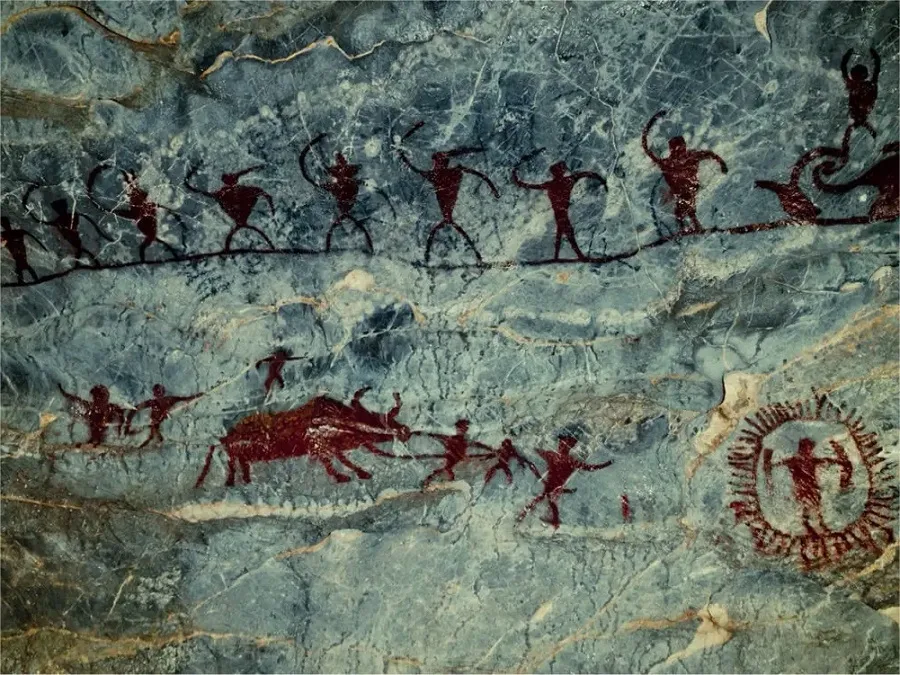
The Cliff Paintings of Cangshan, discovered in the Jin Niu Village on the western slope of Malong Peak at an altitude of 2000 meters, date back to the Neolithic period. Discovered in October 1994, these paintings cover an area of around 30 square meters on a natural cliff surface of 120 square meters. Divided into five groups, the paintings depict scenes of cattle, herding, worship, gathering, hunting, traditional houses, and dances, totaling over 200 figures. Recognized as a key provincial cultural relic protection unit by the Yunnan Provincial People’s Government in December 2003, these cliff paintings offer invaluable insights into the ancient cultural practices and artistic expressions of the region.
Attractions de Dali, Paysages du Yunnan